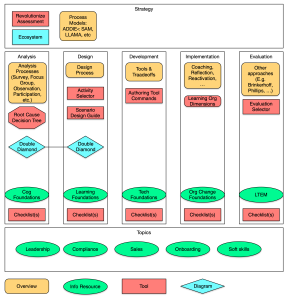A number of years ago now, I analyzed the corporate market for a particular approach. Not normally something I do (not a tool/market analyst), but at the time it made sense. My recommendation, at the end of the day, was the market wasn’t ready for the product. I am inclined to think that the answer would be different today. Maybe we are getting smarter?
First, why me? A couple of reasons. For one, I’m independent. You (should) know that you’ll get an unbiased (expert) opinion. Second, this product was something quite closely related to things I do know about, that is, learning experiences that are educationally sound. Third, the asker was not only a well-known proponent of quality learning, but knew I was also a fan of the work. So, while I’m not an analyst, few same would’ve really understood the product’s value proposition, and I do know the tools market at a useful level. I knew there was nothing else on the market like it, and the things that were closest I also knew (from my authoring simulation games work, as in my first book, and the research reports for the Learning Guild).
The product itself allowed you to author deep learning experiences. That is, where you immerse yourself in authentic tasks, with expert support and feedback. Learning tasks that align with performance tasks are the best practice environments, and in this case were augmented with resources available at the point of need. The main problem was that they required an understanding of deep learning to be able to successfully author. In many cases, the company ended up doing the design despite offering workshops about the underlying principles. Similarly, the industrial-strength branching simulation tools I knew then struggled to survive.
And that was my reason, then, to suggest that the market wasn’t ready. I didn’t think enough corporate trainers, let alone the managers and funding decision-makers, would get the value proposition. There still are many who are ‘accidental’ instructional designers, and more so then. The question, then, is whether such a tool could now succeed. And I’m more positive now.
I think we are seeing greater interest in learning science. The big societies have put it on their roadmaps, and our own little LDA learning science conference was well received. Similarly, we’re seeing more books on learning science (including my own), and more attention to same. I think more folks are looking for tools that make it easy to do the right thing. Yes, we’re also confronting the AI hype, but I think after the backlash we’ll start thinking again about good, not just cheap and fast. I not only hope, but I think there’s evidence we are getting smarter and more focused on quality. Fingers crossed!

